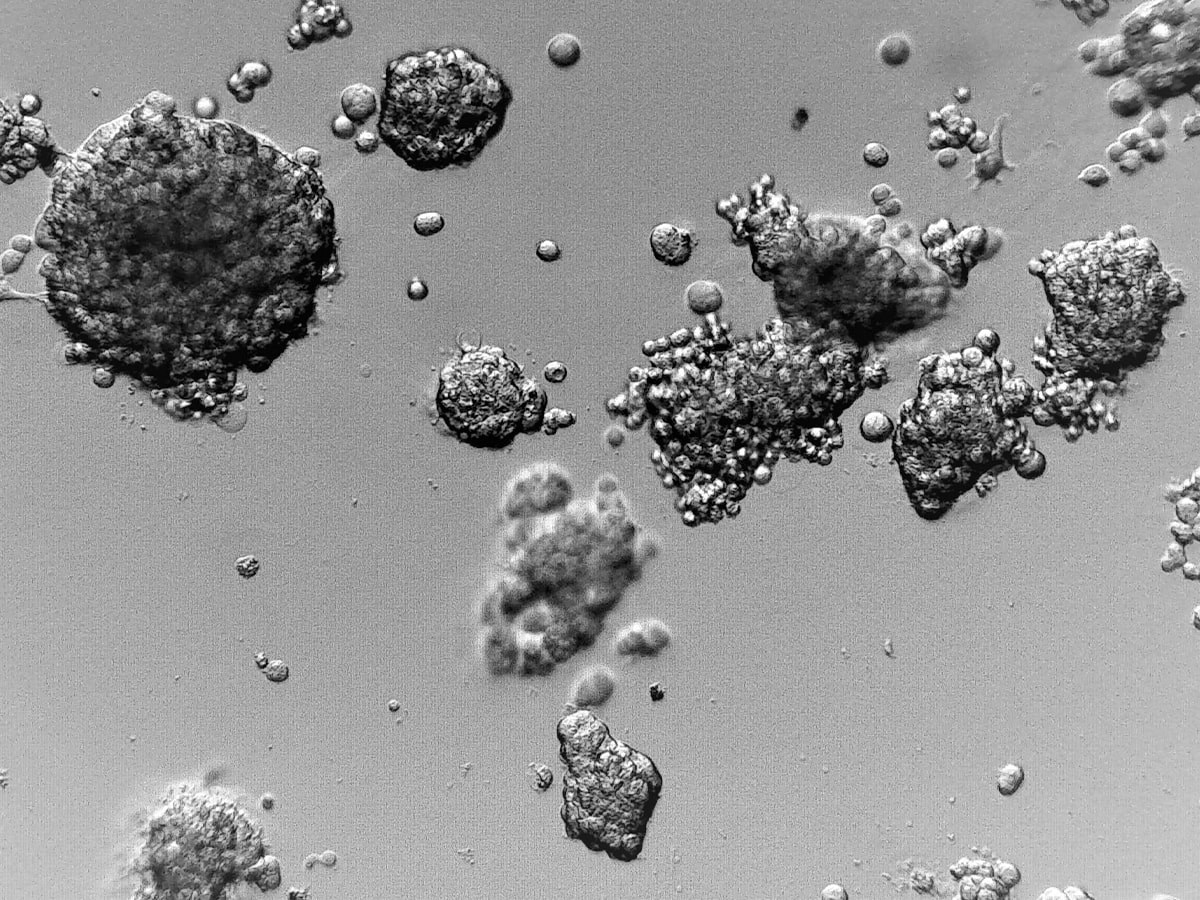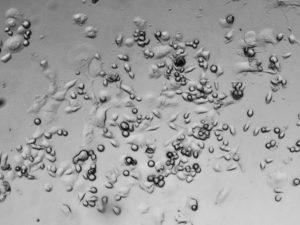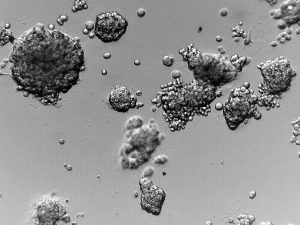
03 Dec Real, Three Dimensional Research
Reaching out to the world of biotechnology science connected to the cell culture or process of drug development, we will encounter to an in vitro researches as a two dimensional cell culture provided in a plastic flasks or plates. For the first sight that method seemed to be easy, low time-consuming, low-cost technic and effortless to interpret. However monolayer of the cells does not reflect tumour environment in the developing cancer cells in living organism as it is in the in vivo or clinical researches. Moreover cells in the 2D adherent culture, have unrestricted access to the nutrients included in the medium surrounding them.1 That kind of the statement is not the same like in the living organism, because tumour spheroids are composed of different zones like necrotic core, hypoxic centre and zones of low and high proliferation level.2 In that case it is easy to guess that some tested drugs can be effective in that in vitro model, because cells will be less resistant for that substance, but during in vivo researches on the real tumour, drug will affect only on the cells in the outer layer.
2D cell culture vs 3D spheroid on the hydrogel


All that problems loomed large in researcher’s mind for many years, since scientists have started to create new, innovative type of research – 3D cell culture. It wasn’t easy to overcome problems to create living, three dimensional cells which will be capable to generate spheroids, similar to the structures, forming in the living organism. But, nowadays we have some solutions to imitate that environment. The differences are due to different properties between them, depends on our needs for the researches.
Has the effort paid off?
Science is moving towards greater use of 3D cell culture, due to the many advantages it offers. On the market it is possible to find various scaffolds, hydrogels or agar coated surface etc. Furthermore, after discovery of the 3D cell culture, it was shown that gene expression in the cells cultured as a monolayer can be different then in cells from 3D cell culture or tumour implant in vivo.2 It shows that a large part of all genes are inactivated during culture cells on the flat surface! That disturbing information can have influence of cell response for some external signals or even drug treatment.
Future of the Life Science
People in every area of life are striving to simplify and automate certain processes, while at the same time assuming that reliable and credible results are obtained. The same process is taking place in the area of drug development, where cell-based HTS (high throughput screening) is becoming increasingly common. In some research 3D cell culture was used to design assay in which thousands of drugs was screened in the 384-well plates consist living cells cultured on the hydrogel. However some of the drugs which demonstrated inhibition effect on the 3D cell culture, does not show that effect on the 2D cell culture!3 Also part of the substance have inhibition properties only in the 2D cell culture that’s may be it shows false positive result which have to be checked before further in vivo researches. That kind of way in the future research have to be developed more in the following years but maybe it will be standard in drug discoveries.
Conclusions
Discovery of the 3D cell culture gave us new capabilities in many fields of science, especially drugs discovery. It is so important for the future to develop that technic, just because if we will refine it to perfection, it can be alternative to animal model in in vivo researches which are expensive. Furthermore it can rescue thousands of laboratory animals! Maybe it won’t replace the whole in vivo tests because they can show us drug delivery in the throughout body, but substituting even part of them, will be a huge progress in scientist work. Moreover, using only 2D cell culture for testing drugs is not so reliable, because human living cells in the body are just not as flat as on the plastic surface. That’s why our company is trying to change general habit of using only 2D cell culture, to make more popular – real, three dimensional research.
Author: Iwona Gurgul
¹ Kapałczyńska, M., Kolenda, T., Przybyła, W., Zajączkowska, M., Teresiak, A., Filas, V., … & Lamperska, K. (2018). 2D and 3D cell cultures–a comparison of different types of cancer cell cultures. Archives of medical science: AMS, 14(4), 910.
² Horman, S. R. (2016). Complex High-Content Phenotypic Screening. Special Topics in Drug Discovery, 73.
³ Worthington, P., Drake, K. M., Li, Z., Napper, A. D., Pochan, D. J., & Langhans, S. A. (2019). Implementation of a High-Throughput Pilot Screen in Peptide Hydrogel-Based Three-Dimensional Cell Cultures. SLAS DISCOVERY: Advancing Life Sciences R&D, 24(7), 714-723.

